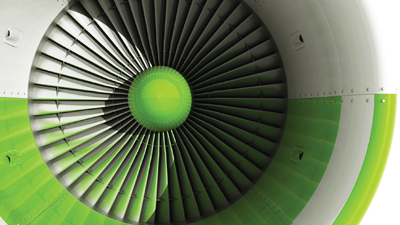
Features
Operations
On Final: A competitive advantage
Thanks to its entrepreneurs, its extraordinarily talented workforce and its sound partnerships with governments and academia, Canada has built one of the world’s largest aerospace industries
January 7, 2011 By Claude Lajeunesse
Thanks to its entrepreneurs, its extraordinarily talented workforce and its sound partnerships with governments and academia, Canada has built one of the world’s largest aerospace industries. Boasting 80,000 direct jobs – 150,000 including indirect and induced jobs – the Canadian aerospace industry features some 400 firms and a presence in each province across the country. The industry has aligned itself with a number of post-secondary institutions and invests more than $1 billion in research and development each year – making it one of the largest contributors to Canadian R&D activities.
 |
|
With more than $22 billion in direct annual revenues – and close to $40 billion including indirect and induced impacts – the aerospace sector generates considerable economic benefit for our economy. Around 80 per cent of Canadian aerospace output is exported – making it a significant contributor the country’s balance of trade. A recent study conducted by Deloitte & Touche entitled The Strategic and Economic Impact of the Canadian Industry states that, in general, for each $100 million of output generated by the Canadian aerospace industry, approximately $120 million in direct, indirect and induced impacts is generated in the Canadian economy as well as approximately 675 direct, indirect and induced jobs. Aerospace is, undoubtedly, an asset to the Canadian economy.
Taking advantage of industry growth
What is particularly encouraging about the aerospace sector is that it is a rapidly growing industry. After weathering a market downturn, global demand for aircraft is growing at an accelerated pace. Over the next 20 years, the demand for new aircraft will represent a market opportunity of an estimated $3 trillion. But, as competitive as our industry has been, a number of new players and countries also desire a piece of this strategically important business. Canada must act in a concerted way to ensure that we capture an optimal part of this aerospace growth.
While countries around the world benefit from a strong and continued government presence in their aerospace industries – either directly through ownership or indirectly through procurement – Canada has been somewhat of an anomaly. Although the industry in partnership with government has been among the highest Canadian R&D investors, investments levels do not match those of the countries we compete against – placing us at a competitive disadvantage.
Since 1997, Canada’s R&D intensity has fallen from approximately 12 per cent to six per cent. In its study, Deloitte states that “An R&D intensity of 6 per cent is likely insufficient for sustaining future growth given that many of Canada’s competitors are investing in R&D at 10 to 15 per cent of sales.” Despite this, the Canadian industry has traditionally punched above its weight and is positioned to do so into the future. We are a country that has had outstanding aerospace innovators, solid R&D partnerships and an extraordinarily talented and highly-skilled workforce.
Remaining competitive
It will take more than marvelling at our extraordinary past successes, though, to remain competitive in the future. Beyond the rise of new players and countries, the industry is facing a potential skills shortage due to an aging workforce, new environmental regulations which increase costs, and a rising Canadian dollar which makes our exports less attractive to global buyers.
To stay competitive, the development of greener technologies must be part of the industry’s future. Key technological trends related to the next generation of aircraft include the shift toward technologies that are more fuel efficient and that produce fewer emissions, aircraft which operate more quietly, and technologies that are generally more sustainable from a lifecycle perspective.
To succeed in an increasingly competitive world market, the Canadian aerospace industry will need to adapt through specialization and technological innovation or a combination of the two. It will also need to partner with governments in Canada that recognize and support the full potential of this valuable high-tech industry and its ability to create high-value jobs across the country now, and into the future.
Claude Lajeunesse is president and CEO of the Aerospace Industries Association of Canada.